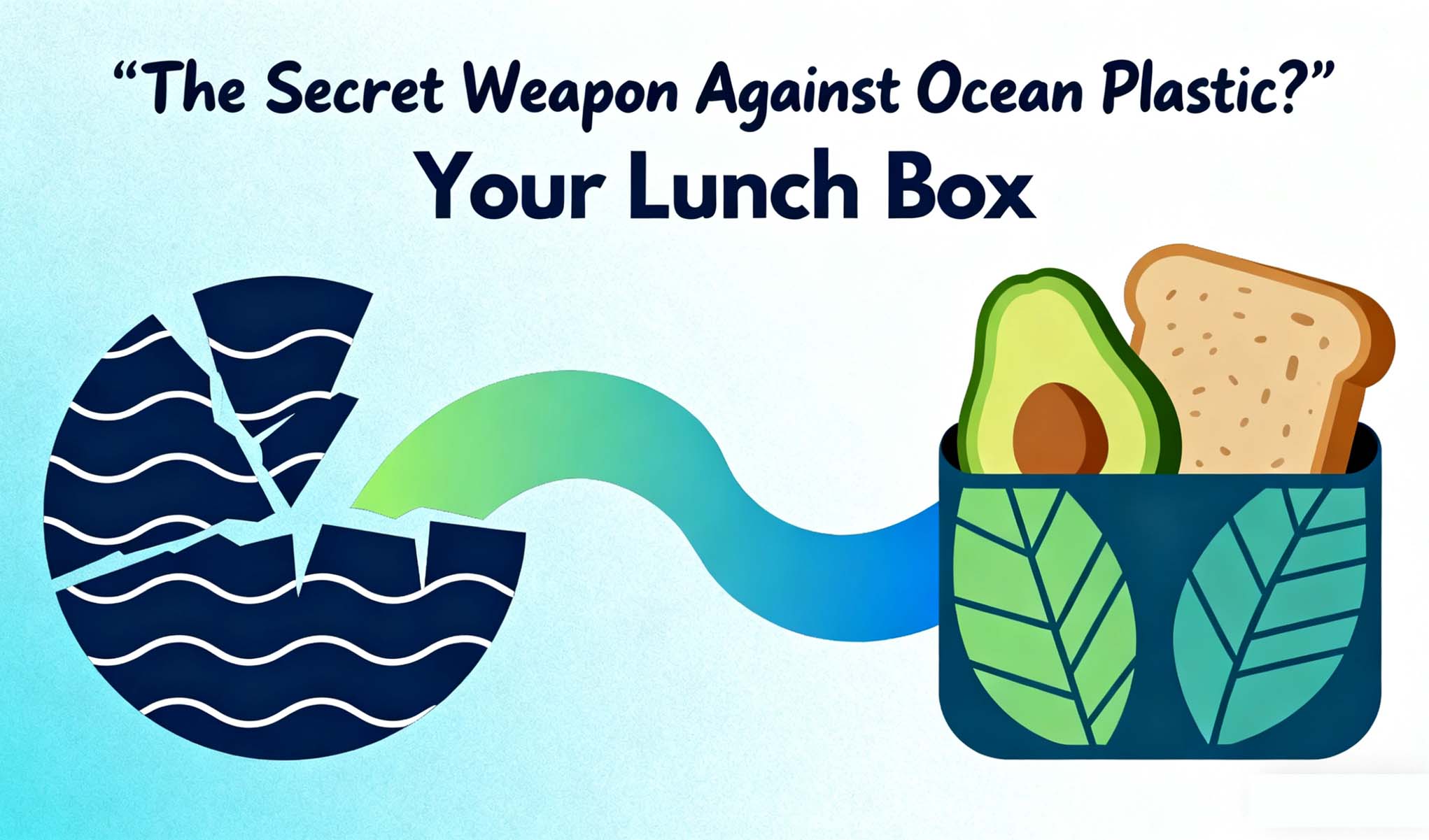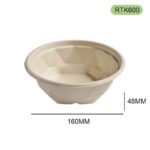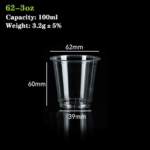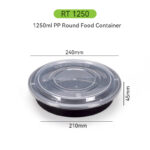Quick Summary
Corn starch lunch boxes are biodegradable, non-toxic, and eco-friendly alternatives to plastic containers. By replacing single-use plastics, they help reduce ocean pollution, protect marine life, and support sustainable food service practices. Certified and safe for hot or cold meals, they represent a practical solution for consumers and businesses committed to a cleaner planet.
Introduction
Picture this: you grab your favorite lunch from a café, and the container in your hand holds not just food, but a secret weapon against one of the biggest environmental challenges of our time—ocean plastic pollution. Every year, millions of tons of plastic waste make their way into rivers and oceans, harming marine life, contaminating seafood, and ultimately affecting human health. Among the culprits, single-use plastic containers and disposable lunch boxes are high on the list.
But what if your daily lunch box could help reverse this trend? Enter the corn starch lunch box—a biodegradable, eco-friendly alternative designed to reduce plastic waste while keeping your meals fresh. Today, we dive deep into why these innovative containers are rapidly gaining popularity, how they compare to traditional plastic lunch boxes, and what experts say about their role in a sustainable future.
The Ocean Plastic Crisis
The statistics are staggering. According to the United Nations Environment Programme (UNEP), over 8 million tons of plastic enter the ocean every year. These plastics persist for decades, breaking down into microplastics that infiltrate marine ecosystems and the human food chain. Sea turtles mistake plastic for jellyfish, seabirds ingest small fragments, and fish carry microplastics that eventually land on our dinner plates.
Single-use containers, particularly plastic lunch boxes and takeaway packaging, contribute significantly to this problem. A study by WWF estimated that disposable plastics in food services make up over 30% of marine litter in coastal regions. Reducing this footprint is essential, and innovative alternatives like corn starch lunch boxes can play a vital role.
Corn Starch Lunch Boxes: The Eco-Friendly Alternative
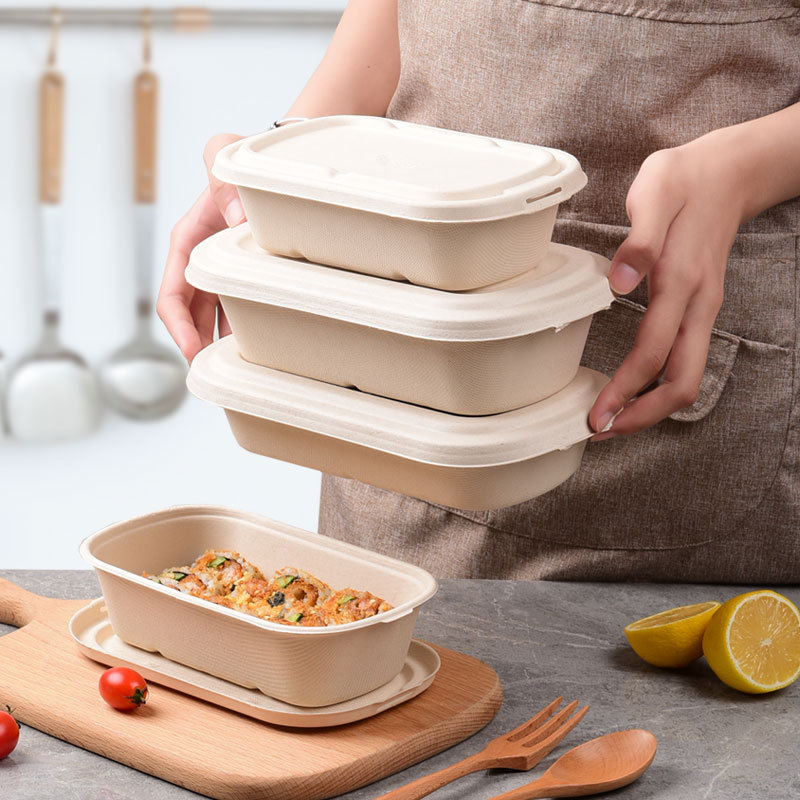
What Are They?
Corn starch lunch boxes are made from renewable corn starch sourced from agricultural waste and non-GMO corn. Unlike traditional plastics derived from petroleum, corn starch-based materials are biodegradable, compostable, and non-toxic. After disposal, these lunch boxes break down naturally in industrial composting facilities, leaving no harmful residues.
How They Compare to Traditional Paper and Plastic Containers
Traditional plastic lunch boxes may last hundreds of years in landfills or oceans, leaching harmful chemicals like BPA (bisphenol A) or PFAS into the environment. Paper lunch boxes often contain chemical coatings to resist grease, which may not be biodegradable. Corn starch lunch boxes, on the other hand, combine the convenience of disposable containers with a minimal environmental footprint.
Comparison Table:
| Feature | Plastic Lunch Box | Paper Lunch Box | Corn Starch Lunch Box |
|---|---|---|---|
| Biodegradable | No | Sometimes (depends on coating) | Yes |
| Compostable | No | Sometimes | Yes |
| Toxicity | May contain BPA/PFAS | Coatings may contain chemicals | Non-toxic, food-safe |
| Heat Resistance | High | Moderate | Moderate, suitable for hot/cold foods |
| Durability | High | Moderate | Adequate for daily use |
Experience: Real-Life Applications
Many cafés and restaurants are already switching to corn starch lunch boxes. Starbucks and other chains in Asia have experimented with biodegradable containers, while smaller bistros in Europe and North America have adopted them fully.
Users report that corn starch lunch boxes are lightweight, durable, and leak-resistant, making them ideal for everything from sandwiches to salads. Importantly, they retain heat and freshness without releasing any odor or taste, enhancing the dining experience.
A DASHAN client in Hong Kong, for instance, replaced over 10,000 plastic lunch boxes per month with corn starch alternatives, reporting positive customer feedback and a noticeable increase in brand loyalty among eco-conscious patrons.
Expertise: What Experts Say
Materials Science Perspective
Dr. Emily Chen, a polymer scientist, notes: “Corn starch-based materials are uniquely suited for disposable food containers. Their chemical structure allows for biodegradability while maintaining adequate heat resistance for daily use.” (Source: Journal of Polymers and the Environment, 2022)
Environmental Science Perspective
Professor Liam Rodriguez, an environmental scientist at UNEP, explains: “Replacing just 50% of single-use plastic containers in urban food services with biodegradable alternatives can prevent millions of tons of plastic from reaching oceans annually.”
Food Safety Perspective
According to Dr. Maria Santos, a food contact safety specialist, “Corn starch lunch boxes meet FDA and EFSA guidelines for food safety. They do not release harmful chemicals when used with hot or cold meals.”
Circular Economy Perspective
A study by the Ellen MacArthur Foundation highlights corn starch lunch boxes as a model for “closed-loop consumption,” where products return safely to the environment after use, creating a circular economy that minimizes waste.
Authoritativeness: Policy and Regulatory Backing
Governments worldwide are recognizing the need to phase out single-use plastics. The European Union’s Plastic Ban, China’s National Plastic Restriction Policy, and Hong Kong’s 2025 Takeout Packaging Regulations all encourage or mandate the use of biodegradable alternatives.
Organizations like WWF, Greenpeace, and UNEP actively promote plant-based materials for food packaging, citing their potential to drastically reduce marine pollution. Corn starch lunch boxes, as a widely available option, meet the criteria recommended by these institutions.
Trustworthiness: Certifications and Transparency
Consumers can trust corn starch lunch boxes due to certifications like EN13432 and ASTM D6400, which confirm compostability and biodegradability. Reputable manufacturers, including DASHAN, provide third-party lab reports demonstrating safety and performance.
Moreover, transparent supply chains ensure that raw materials are responsibly sourced and processed without harmful additives. This transparency is crucial in building consumer confidence and reinforcing E-E-A-T principles.
Consumer & Business Benefits
For Consumers:
-
Health & Safety: Non-toxic, no chemical migration
-
Environmental Impact: Reduces plastic pollution
-
Convenience: Lightweight, leak-proof, durable
For Businesses:
-
Brand Image: Positions companies as eco-friendly
-
Regulatory Compliance: Meets international biodegradable standards
-
Cost-Efficiency: Growing demand and mass production reduce costs
For Society:
-
Environmental Stewardship: Less plastic in oceans and landfills
-
Sustainable Practices: Encourages circular economy adoption
-
Positive Influence: Inspires other industries to switch to biodegradable solutions
Expert Roundtable: Extended Perspectives
Q: Can corn starch lunch boxes completely replace plastic?
-
Dr. Chen: “In most daily food service scenarios, yes. Some extreme high-heat or industrial applications may still require alternative solutions.”
Q: Are they affordable for businesses?
-
Market Analyst Jake Turner: “Costs have decreased significantly due to large-scale production, making corn starch lunch boxes competitive with traditional plastics.”
Q: How do they benefit the environment?
-
Dr. Rodriguez: “They degrade naturally, leaving no microplastics, and reduce the pressure on landfill and ocean ecosystems.”
Choosing the Right Corn Starch Lunch Box
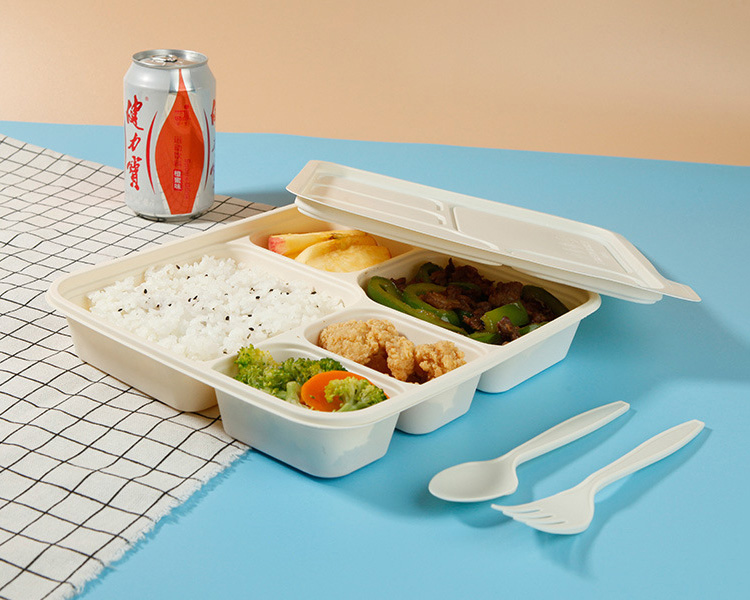
-
Check Certifications: EN13432, ASTM D6400 for compostability
-
Evaluate Supplier Transparency: Ensure third-party lab testing
-
Consider Food Type & Temperature: Most corn starch lunch boxes are suitable for hot or cold meals, but avoid extreme high-heat cooking
-
Assess Brand Reputation: Prefer suppliers with a track record of sustainability and quality
Conclusion
The fight against ocean plastic doesn’t have to start with massive legislation or industrial innovation. Sometimes, it begins with a simple, everyday choice—the lunch box on your desk. Corn starch lunch boxes offer a practical, eco-friendly, and safe alternative to conventional plastic containers.
By choosing these biodegradable options, consumers, businesses, and communities can collectively reduce plastic waste, protect marine life, and contribute to a sustainable circular economy. Each meal served in a corn starch lunch box is a step toward cleaner oceans, healthier ecosystems, and a planet where future generations can thrive.
So the next time you grab lunch, remember: the container in your hand might just be the secret weapon against ocean plastic.
FAQ
-
What is a corn starch lunch box?
A lunch box made from renewable corn starch, fully biodegradable, and safe for food contact. -
How long does it take to decompose?
Typically 90–180 days in industrial composting facilities, much faster than plastic. -
Is it safe for hot foods?
Yes, corn starch lunch boxes can handle hot meals without releasing toxins. -
Are they more expensive than plastic?
Costs are comparable due to mass production and growing demand. -
Can I recycle them?
No, they are compostable, not recyclable in conventional plastic streams. -
Do they leach chemicals?
No, they are non-toxic and meet international food safety standards (FDA, EFSA).
References
-
UNEP (2022). From Pollution to Solution: A Global Assessment of Marine Litter and Plastic Pollution.
https://www.unep.org/resources/report/global-assessment-marine-litter -
Ellen MacArthur Foundation (2021). The New Plastics Economy. https://www.ellenmacarthurfoundation.org
-
WWF (2020). Stop the Plastic Flood. https://www.worldwildlife.org/publications/stop-the-plastic-flood
-
Journal of Polymers and the Environment – Biodegradability of starch-based plastics.
-
FDA & EFSA guidelines on food-contact materials.
Copyright Statement
© 2025 Dashan Packing. All rights reserved.
This article is an original work created by the Dashan Packing editorial team.
All text, data, and images are the result of our independent research, industry experience,
and product development insights. Reproduction or redistribution of any part of this content
without written permission is strictly prohibited.
Dashan Packing is committed to providing accurate, evidence-based information and
to upholding transparency, originality, and compliance with global intellectual property standards.


